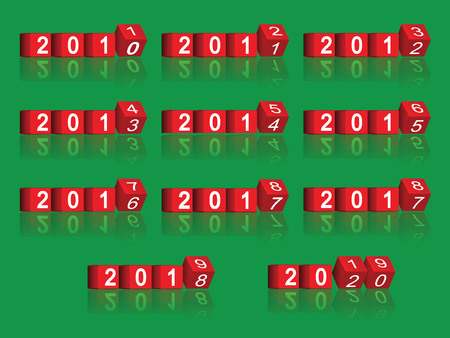Introduction to British Sabats and Tarot
Britain’s seasonal calendar is marked by eight significant sabats, each one rooted in ancient tradition and local folklore. These festivals—Imbolc, Ostara, Beltane, Litha, Lammas, Mabon, Samhain, and Yule—reflect the shifting rhythms of nature and form the backbone of the Wheel of the Year. Celebrated across England, Scotland, Wales, and Northern Ireland, the sabats are more than mere seasonal markers; they represent moments for community gathering, storytelling, and personal reflection. In recent years, there has been a renewed interest in connecting with these age-old customs through modern spiritual practices such as tarot reading. The art of tarot offers a structured yet intuitive way to explore one’s inner landscape during each festival. By aligning specific tarot spreads with the energies and symbolism of each sabat, practitioners can deepen their understanding of themselves and their place within the cycles of British nature. This article will guide you through the interplay between traditional British sabats and thoughtfully designed tarot layouts, providing a framework for meaningful introspection throughout the year.
2. The Wheel of the Year: British Sabats Explained
The Wheel of the Year is central to modern British pagan and witchcraft traditions, marking eight sabats that celebrate the changing seasons and cycles of nature. Each sabat not only connects practitioners with ancient customs but also offers a reflective moment for tarot readings tailored to the seasons unique energies. Below, we explore each sabat—Imbolc, Ostara, Beltane, Litha, Lammas, Mabon, Samhain, and Yule—delving into their history, customs, and relevance in contemporary British practice.
| Sabat | Date | Historical Roots | Traditional Customs | Modern Relevance |
|---|---|---|---|---|
| Imbolc | 1st–2nd February | Celtic festival honouring Brigid, goddess of hearth and creativity. | Lighting candles, making Brigid’s crosses, spring cleaning. | Symbolises new beginnings; popular for intention-setting tarot spreads. |
| Ostara | 20th–23rd March (Spring Equinox) | Anglo-Saxon celebration of Eostre, goddess of dawn. | Egg decorating, planting seeds, nature walks. | A time for balance and growth; ideal for spreads about renewal and potential. |
| Beltane | 30th April–1st May | Celtic fire festival welcoming summer. | Maypole dancing, lighting bonfires, floral crowns. | Celebrates fertility and passion; spreads focus on creativity and relationships. |
| Litha | 20th–22nd June (Summer Solstice) | Midsummer solstice rites across Britain’s history. | Sunrise gatherings at stone circles, herbal crafting. | Acknowledges abundance; readings centre on gratitude and fulfilment. |
| Lammas/Lughnasadh | 1st August | Celtic harvest feast honouring Lugh. | Baking bread, corn dollies, local fairs. | The first harvest; spreads explore reaping rewards and sharing abundance. |
| Mabon | 20th–23rd September (Autumn Equinox) | Druidic thanksgiving for balance and harvest’s end. | Apple picking, feasting on local produce. | A time for reflection; tarot focuses on gratitude and release. |
| Samhain | 31st October–1st November | Ancestral festival marking the Celtic New Year. | Pumpkin carving, ancestor altars, bonfires. | A time to honour ancestors; spreads deal with transformation and remembrance. |
| Yule | 20th–23rd December (Winter Solstice) | Norse and Anglo-Saxon winter solstice celebrations. | Yule logs, evergreen decorations, wassailing. | The return of light; readings support hope and setting intentions for the year ahead. |
Together, these eight sabats form a rhythmic calendar that reflects both Britain’s cultural heritage and the natural environment. Today’s practitioners incorporate traditional rituals while adapting them to urban life—often blending old customs with new interpretations. Tarot readings during each sabat help individuals align personal growth with seasonal shifts, fostering a deep connection between self-discovery and the turning of the year.

3. Tarot’s Place in British Seasonal Celebrations
Within the tapestry of British pagan and folk traditions, tarot has established itself as a meaningful and versatile companion to seasonal observances. The eight sabats—Imbolc, Ostara, Beltane, Litha, Lammas, Mabon, Samhain, and Yule—each mark significant points in the wheel of the year, blending ancient customs with contemporary spiritual practice. While tarot is not historically native to Britain, it has been readily adopted by modern practitioners seeking tools for personal insight and community connection during these pivotal festivals.
The Reflective Role of Tarot at the Sabats
Tarot readings are often incorporated into sabat rituals as a form of introspection and guidance. For many, drawing cards at key moments—such as the turning of the seasons or during communal gatherings—acts as a mirror to internal states or group energies. At Imbolc, for example, spreads might focus on new beginnings and emerging intentions; during Samhain, they may centre on ancestral messages and release. In this way, tarot becomes both a reflective practice and a means to attune oneself to the cyclical rhythms of nature celebrated across Britain.
Fostering Community Through Shared Readings
Beyond individual reflection, tarot often takes on a communal dimension during sabat celebrations. Group readings are common within covens or informal circles, where participants draw cards for one another or collectively interpret spreads relevant to the festival’s theme. This shared activity not only deepens social bonds but also fosters a sense of collective purpose—a hallmark of British folk gatherings from village fêtes to solstice bonfires. Tarot thus acts as both a conversational catalyst and a symbolic bridge between personal experience and communal tradition.
Honouring Local Customs and Contemporary Practice
In adapting tarot for seasonal use, many British practitioners weave local folklore and landscape into their interpretations. Card meanings may be influenced by regional myths or natural cycles specific to the British Isles: bluebell woods at Beltane, harvest fields at Lammas, or misty moors during Mabon. Such adaptations ensure that tarot remains relevant and resonant within its adopted cultural context. Ultimately, its integration into sabat observances reflects an evolving spiritual landscape—one that values both ancient roots and creative expression throughout the year.
4. Creating Seasonal Tarot Spreads
Designing tarot spreads that resonate with the British sabats invites you to align your readings with the unique rhythm of the UK’s seasonal festivals. Here, we’ll break down a step-by-step approach to crafting evocative, sabat-themed tarot layouts, embedding local symbolism, folklore, and motifs into each spread for richer guidance.
Step 1: Identify the Sabat’s Core Themes
Begin by clarifying the central energies and stories of each festival. For example, Imbolc is associated with renewal and Brigid’s blessings, while Samhain marks ancestral connection and the thinning veil. Reference traditional British folklore and customs to root your spreads in local context.
Step 2: Select Symbolic Positions
Determine card positions by drawing on UK seasonal imagery—think snowdrops for early spring or oak leaves at midsummer. Assign each position a theme reflecting both the sabat and its folkloric associations.
| Sabat | Key Symbols | Possible Card Positions |
|---|---|---|
| Beltane | Maypole, Hawthorn, Fire | Passion Ignited / Seeds Sown / Partnerships Forged |
| Lughnasadh (Lammas) | Wheat Sheaf, Crow, Bread | Harvest Gained / Gratitude / Letting Go |
| Samhain | Pumpkin, Black Cat, Apple | Ancestral Message / What To Release / Hidden Wisdom |
Step 3: Incorporate Folklore and Local Customs
Add depth by weaving in British myths or traditions. For example, use a ‘Brigid’s Cross’ spread at Imbolc or arrange cards in a circle to echo stone circles during Midsummer solstice. Each layout becomes a ritual act mirroring ancient practices.
Sample Spread Structure: The Lammas Threefold Blessing Spread
- Card 1: What I Have Sown – Reflection on efforts from spring to now.
- Card 2: The Ripening – Guidance for nurturing current projects as harvest approaches.
- Card 3: The Loaf Shared – Blessings and wisdom to share with community or family.
Tuning Into the Season’s Mood
Select tarot decks or supporting tools (such as local wildflowers or found objects) that evoke each sabat’s atmosphere. For instance, place bluebells around your Beltane spread or light a beeswax candle for Imbolc.
Step 4: Personalise and Reflect
Encourage journaling after each reading to track how the seasonal energies manifest in your life. Use recurring local motifs—like rain for cleansing at Ostara or misty mornings at Samhain—to anchor your interpretations in lived British experience.
5. Sample Spreads for Each Sabat
To fully embrace the rhythm of the British Wheel of the Year, each sabat can be honoured with a bespoke tarot spread that resonates with its unique seasonal energy and cultural traditions. Below, we provide detailed examples of tailored layouts for all eight British sabats, including card positions, suggested questions, and connections with regional customs.
Imbolc (1st–2nd February): The Stirring of Spring
Three-Card Spread: Awakening Light
Positions:
- What is emerging from within me?
- How can I nurture new beginnings?
- Where should I direct my growing light?
This spread reflects Imbolc’s focus on renewal and inspiration, echoing British traditions of lighting candles to welcome Brigid and the first signs of spring.
Ostara (20th–23rd March): The Vernal Equinox
Four-Card Spread: Balance and Renewal
Positions:
- Where do I seek balance in my life?
- What needs rejuvenation?
- What seeds should I plant now?
- Which aspect of myself seeks expression?
The Ostara layout mirrors customs like egg decorating and Morris dancing, inviting you to explore equilibrium and growth as day equals night.
Beltane (30th April–1st May): Fire and Fertility
Five-Card Spread: Igniting Passion
Positions:
- What desires fuel me?
- What blocks my passion?
- How can I invite more joy?
- Who or what supports my vitality?
- How do I celebrate abundance?
This Beltane spread channels the energy of Maypole dances and bonfires, encouraging connection to creativity and sensuality.
Litha (20th–22nd June): Midsummer Magic
Three-Card Spread: Full Bloom
Positions:
- What reaches its peak in my life?
- How can I harness this energy?
- What must I release as the light wanes?
Litha’s vibrant festivities—such as flower crowns and sunrise gatherings at Stonehenge—inspire reflection on personal power and gratitude.
Lughnasadh (1st August): The First Harvest
Four-Card Spread: Reaping Rewards
Positions:
- What have I accomplished?
- Where should I give thanks?
- What needs further tending?
- How do I prepare for the coming changes?
This spread echoes traditional harvest festivals and loaf-baking competitions across Britain, focusing on gratitude and foresight.
Mabon (21st–24th September): The Autumn Equinox
Three-Card Spread: Gathering In
Positions:
- What blessings do I gather now?
- Where do I find balance amidst change?
- How can I share my abundance?
Mabon’s apple-picking and feasting traditions are reflected in this spread, which centres on gratitude, sharing, and equilibrium.
Samhain (31st October–1st November): Ancestors’ Night
Five-Card Spread: Veil Between Worlds
Positions:
- What wisdom do my ancestors offer?
- What must I let go of this year?
- What lies hidden from me now?
- How can I honour the past while moving forward?
- Which part of myself seeks transformation?
This Samhain layout draws from British folk practices like ancestral storytelling, soul cakes, and lantern processions—perfect for deep introspection.
Yule (20th–23rd December): Winter Solstice
Four-Card Spread: Returning Light
Positions:
- Where is hope rekindled in my life?
- How do I nurture inner warmth through darkness?
- Who or what brings me comfort now?
- Which dream will guide me into the new year?
The Yule spread honours customs such as wassailing, holly decorations, and festive gatherings, helping you reflect on renewal and community as the sun returns.
6. Celebrating the Year: Practical Tips and Rituals
Integrating tarot readings into the celebration of British sabats brings a layer of reflection and connection to these seasonal gatherings. Below are practical suggestions for blending tarot with traditions, ensuring your sabat celebrations remain rooted in local culture while embracing the mystical.
Tarot at the Heart of Sabat Gatherings
Begin by choosing a tarot spread that aligns with the theme of each sabat. For instance, during Imbolc, focus on spreads about new beginnings and inspiration, while Samhain might invite layouts exploring ancestral wisdom and transformation. Set aside a quiet corner at your gathering, inviting guests to draw a card or partake in a group reading that reflects the spirit of the season.
Rituals for Reflection and Connection
Mark the turning of the wheel with simple rituals that weave tarot into the fabric of your event. Before sharing food or lighting the sabat fire, encourage each participant to pull a card and reflect upon its relevance to their personal journey through the year. You may also create a collective altar where cards drawn are placed alongside traditional symbols—like spring flowers at Beltane or autumn leaves at Mabon—to visually represent shared intentions.
Decor That Echoes British Traditions
Infuse your space with decor inspired by local customs. Utilise wildflowers, greenery, or seasonal produce sourced from British hedgerows and gardens. Drape tartan cloths or use hand-thrown pottery as vessels for offerings. Incorporate motifs like hares at Ostara or oak leaves at Litha, providing a distinctly British backdrop to your tarot practice.
Community Practices: Sharing Stories and Insights
Encourage open sharing after readings—a hallmark of community gatherings across Britain. Whether around a bonfire or a kitchen table, invite participants to discuss their cards’ messages and how they resonate with the sabat’s themes. This fosters a sense of togetherness reminiscent of traditional storytelling circles found throughout the UK.
Blending Old Ways with New Wisdom
By harmonising tarot layouts with established sabat rituals, you create meaningful touchpoints that honour both ancient tradition and contemporary spiritual practice. These gatherings become opportunities not only for celebration but also for deepening self-awareness and communal bonds, truly embodying the cyclical nature of the British year.
7. Conclusion: Embracing the British Tarot Year
Reflecting on the journey through the British sabats and their corresponding tarot spreads, it becomes clear that aligning our practice with the distinct rhythm of the UK’s seasonal cycles offers a richer and more authentic experience. The wheel of the year is deeply woven into British heritage, from the blossoming hedgerows of Beltane to the crisp introspection of Samhain. By using tarot as a companion throughout these turning points, we not only honour tradition but also attune ourselves to subtle shifts in nature and community.
Deepening Connection with British Seasons
Each sabat offers an opportunity to pause and reflect, using tarot layouts designed specifically for local energies—whether that be the long twilight of Midsummer or the quiet renewal at Imbolc. Integrating familiar British symbols, weather patterns, and folklore into your readings can foster a greater sense of belonging and meaning. Over time, you may notice how your interpretations evolve with each cycle, as your understanding of both tarot and the land matures.
Personalising Your Tarot Year
The beauty of this practice lies in its adaptability. Consider creating a personal tarot journal to record insights at each sabat, noting recurring themes or new revelations. You might adapt spreads by including cards that represent local landscapes or your own ancestry, or invite friends and family to share in group readings during communal celebrations like Lammas or Yule. Experiment with incorporating seasonal herbs, local flowers, or traditional British charms on your reading table to further root your practice in place.
Year After Year: An Evolving Journey
No two years are ever quite the same; as you move through successive cycles, allow your approach to grow organically. Reflect annually on what worked well and which aspects could be deepened—perhaps by studying regional myths or participating in local events that coincide with each sabat. The key is remaining open to discovery while honouring the unique tapestry of British culture and landscape.
By weaving together tarot wisdom with the heartbeat of Britain’s seasons, you create a living tradition—one that is both grounded in history and responsive to personal growth. May each turn of the wheel offer fresh insight and a renewed sense of connection to the land beneath your feet.


